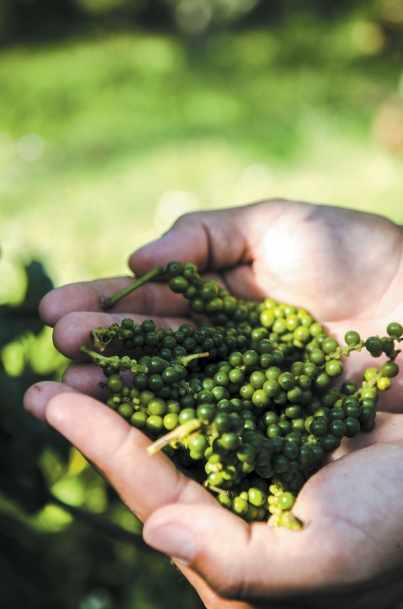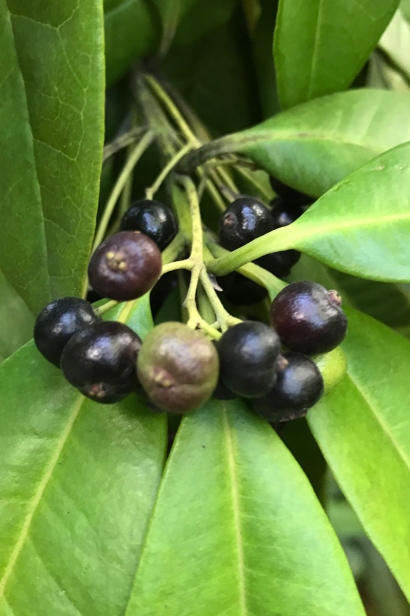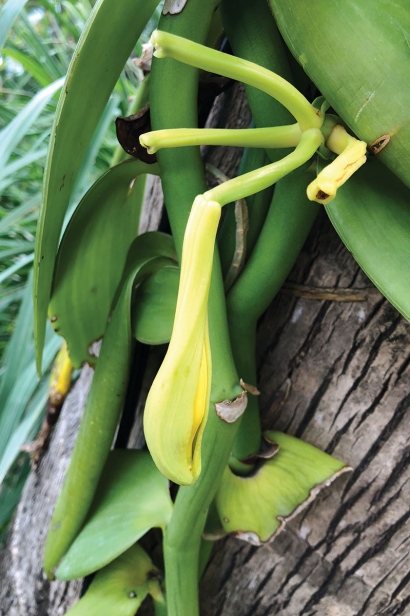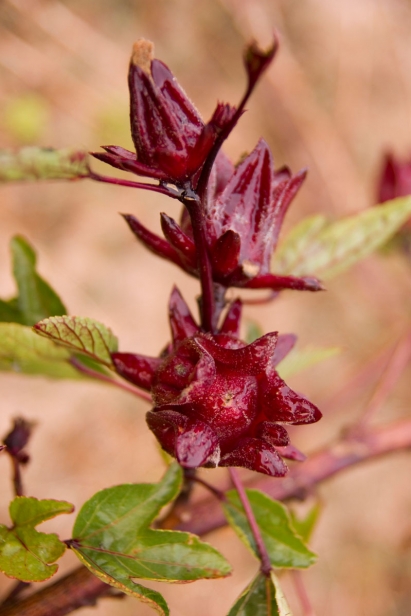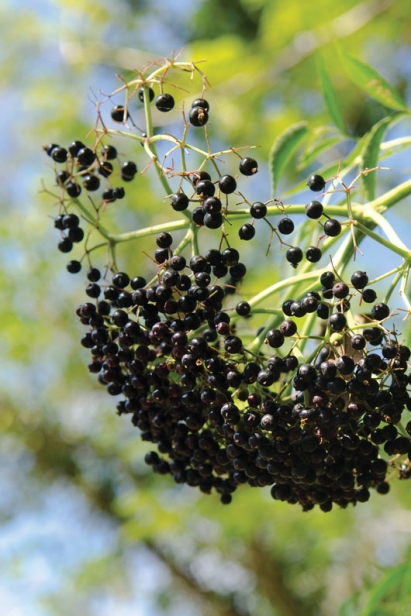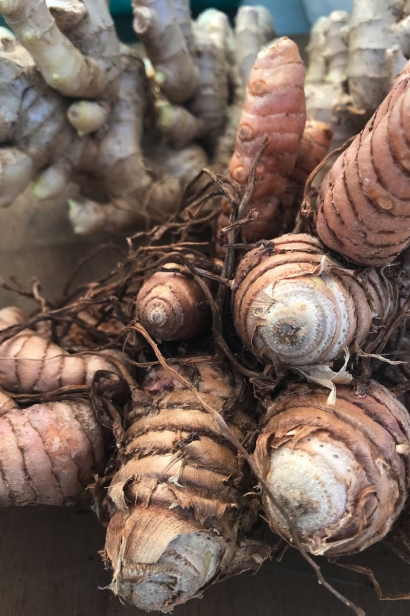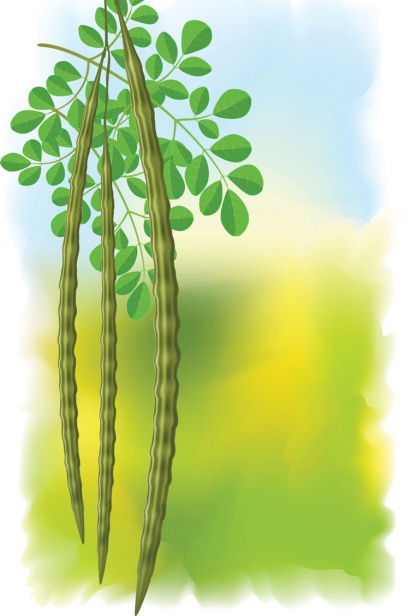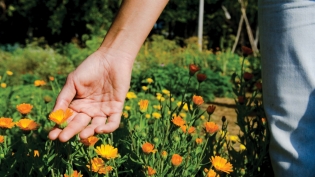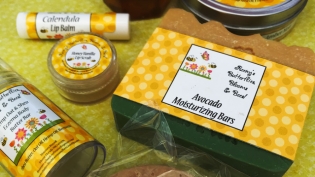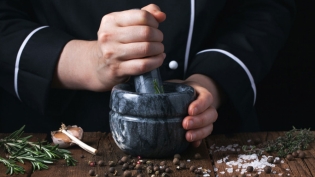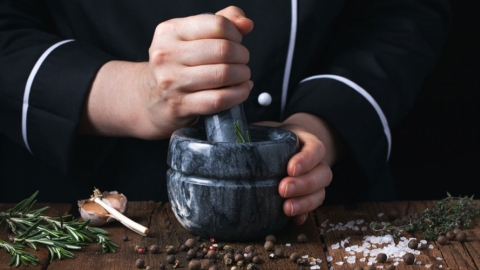Growing Spices and Herbs in South Florida
One of the best parts of living in subtropical South Florida is harvesting fresh foods year-round, and that includes spice trees, shrubs, vines and rhizomes. Common herbs like basil, sage, parsley, dill and rosemary thrive with basic care here. So do allspice, pepper vines, ginger and turmeric. Other plants, like vanilla orchids, coffee and cacao, grow well here, but harvesting and processing their pods and beans to arrive at a final edible product require serious time and commitment.
See many of these plants at Redland Fruit and Spice Park; Fairchild Tropical Botanical Garden; The Kampong; Miami Beach Botanical Garden; Grimal Grove (now under post-Irma reconstruction in the Keys); the Rare Fruit and Vegetable Council of Broward County and Flamingo Gardens. Many of these gardens host plant sales; follow our event calendar for announcements.
SPICES
Allspice (Pimenta dioica)
Also known as pimenta or myrtle pepper, this tree produces berries that are picked when green and dried, then ground into a powder used in baking, Jamaican jerk seasoning, sausages and stews. The fresh leaves are used like bay leaves and are used with the wood to smoke jerk. Allspice trees are attractive, small evergreen trees that grow easily in South Florida.
Bay rum (Pimenta racemosa)
This allspice relative’s leaves are the source of the essential oil used in perfumes and after-shave. Unlike allspice, the fruits are not edible. Rub the leaves on your skin and the fragrance will linger all day. There’s also a lemon variety. This slow-growing tree evergreen reaches 20 feet.
Cassia cinnamon (Cinnamomum aromaticum, Cinnamomum cassia)
This evergreen shrub has aromatic leaves used in tea, and bark that’s harvested for the popular spice.
Cinnamon (Cinnamomum zeylanicum, Cinnamomum verum)
From Sri Lanka, this evergreen shrub or small tree is the source of bark that’s harvested and used in cooking. Leaves are used in teas, and their oils are used in medicine, toothpaste, perfume and candy. This grows easily in South Florida’s subtropics.
Curry leaf (Murraya koenigii)
A member of the citrus family, this small tree has small, shiny, thin leaves used in Southern and Sri Lankan cooking, generally fried before adding to dishes. This small tree (up to 20 feet) is an attractive ornamental, but is off the market at the moment because of citrus greening.
Kaffir lime (Citrus hystrix)
This small tree is grown for its aromatic leaves that give Thai and Southeast Asian curries and stews their distinctive flavor. Kaffir limes are small, wrinkled fruits with a small amount of juice that's too bitter for use, but a tiny amount of grated zest adds fragrance to desserts and other dishes. Because of citrus greening, you may not find this on the market currently.
Pepper (Piper nigrum)
Native to India’s Malabar coast, the black pepper vine is valued for its pungent, aromatic tiny fruits, which are dried and ground. Fruits can be black, white, red and green peppercorns depending on when they’re harvested and how they’re processed. This spreading vine can be grown in a pot on a trellis or in well-drained soil.
Vanilla (Vanilla planifolia)
The pods of this trunk-climbing orchid produce fragrant flowers that attract bees and butterflies. But getting vanilla pods to make extract is a complicated process involving hand pollination and fermentation. Vanilla thrives when planted at the base of oaks or palms. Be patient, since it takes three to five years before flowers start blooming and pods develop.
BEVERAGES
Cacao (Theobroma cacao)
Cacao trees have large leaves that provide shade for the pods that grow from the trunk and branches. When ripe, the fleshy white pulp is delicious. The seeds need to be fermented and dried before being roasted and ground. (For details on the process, see Tree-to-bar Chocolate in our summer 2017 issue). Grow this as an understory plant protected from the wind and too much direct sun.
Coffee (Coffea arabica)
Originally from Ethiopia, coffee plants have white flowers. Coffee berries turn red when ripe. Dry the seeds (or beans), roast them and grind them. This shade-loving shrub or small tree grows in the ground or in a container.
Flor de Jamaica, Roselle (Hibiscus sabdariffa)
The red calyces of this tropical plant are a popular folk remedy for multiple ailments and the basis for herbal teas, including Red Zinger. Steep flowers in hot water, sweeten with sugar or honey. This shrub is hardy and attractive, growing best in sandy loam.
Tea (Camellia sinensis)
The young leaves of this evergreen shrub are harvested for tea. To make tea, cut off twigs with 2-3 young leaves, pull them off and dry in a warm place for 24 hours. Then roll the leaves to crush and break them and ferment in a paper bag for a day or two. Roll and dry in a warm oven for five minutes. Place a few leaves in a pot, add boiling water and allow to brew. This attractive small tree is usually pruned to a shrub.
ROOTS AND BLOOMS
American elder, elderberry (Sambucus canadensis)
A fast-growing deciduous shrub, American elder is a native that blooms prolifically in South Florida with tiny white and yellow flowers. Its dark purple berries are fermented to make wine and are used in jellies and pies. Plant in full sun and prune regularly.
Ginger (Zingiber officinale) and Turmeric (Curcuma longa)
Originally from Asia, these herbaceous perennials have rhizomes, or root masses, that are are juicy when young and fibrous and dry when they’re old. Fresh ginger and turmeric are peeled and grated to use fresh or cooked; they can be candied and pickled and steeped to make teas and beverages. Dried and powdered ginger and turmeric are used in dishes ranging from baked goods to curries, rice dishes, ginger ale and ginger beer. Fresh ginger leaves make a peppery garnish. Plant rhizome pieces in containers and cover with an inch of soil. Soon aromatic foliage will grow. When it dies back, harvest the rhizomes.
Lemongrass (Cymbopogon schoenanthus)
This easy-to-grow grass is widely used in Southeast Asian cooking, adding a lemony warm fragrance to curries, soups, curry pastes, even infused liquor. The woody root and tough leaves are chopped and mashed and generally taken out after cooking.
LEAVES, HERBS AND FLOWERS
Butterfly Pea (Clitoria ternatea)
The bright blue flowers and pods of this fast-growing vine are edible. Dried, the flowers are used in teas and infusions and add a dramatic and unusual blue color to drinks, rice and other dishes.
Catnip (Nepeta cataria)
Not all cats respond to this herb, but if they do, these leaves will keep them (and you) amused. Harvest and dry leaves, then crumble and keep airtight. A little pinch applied to a scratching post should do the trick. Plant in containers or beds in well-drained soil.
Clove (Syzygium aromaticum)
The dried aromatic flower buds of this evergreen tree are a pungent spice that appears throughout many cuisines, flavoring curries, meats, marinades, hot ciders, desserts and fruit dishes. Cloves are also used in Indonesian cigarettes, and clove oil is a popular toothache remedy and essential oil.You may be able to grow this ultra-tropical tree in the lower Keys or in a greenhouse.
Moringa (Moringa oleifera)
This globally useful tree is popular in India, where its leaves and seed pods, called drumsticks, are widely cultivated, moringa trees, and especially their leaves, are especially nutritious, a good source of B vitamins, vitamins C and K, beta carotene, manganese and protein. Leaves are eaten raw or cooked and added to soups, vegetable dishes and salads. Moringa leaf powder is added to drinks, smoothies, salads and stews.Moringa grows well year-round in South Florida. It’s drought tolerant but does not tolerate freezing temperatures.
Pandan (Pandanus amaryllifolius)
A relative of the screwpine, the long, blade-like leaves are used in Thai, Indonesian, Vietnamese, Indian and Sri Lankan cooking to give a nutty, basmati-like fragrance to rice dishes, desserts, chicken and fruit salads. Take a leaf and tie it in a knot to add to rice or other dishes. Plant in full sun or filtered light and protect it if temps drop into the 30s.
Stevia (Stevia rebaudiana)
In South America, this herb has been used for hundreds of years as a sweetener. Today, it is used as a commercial sweetener in soft drinks and a natural sweetener for those looking to reduce their sugar intake – it has no calories, does not spike blood sugar, and is up to 200 times sweeter than sugar. Make a tea or extract out of dried leaves and use to sweeten beverages. Grow in well-drained beds or containers. Prune frequently.


